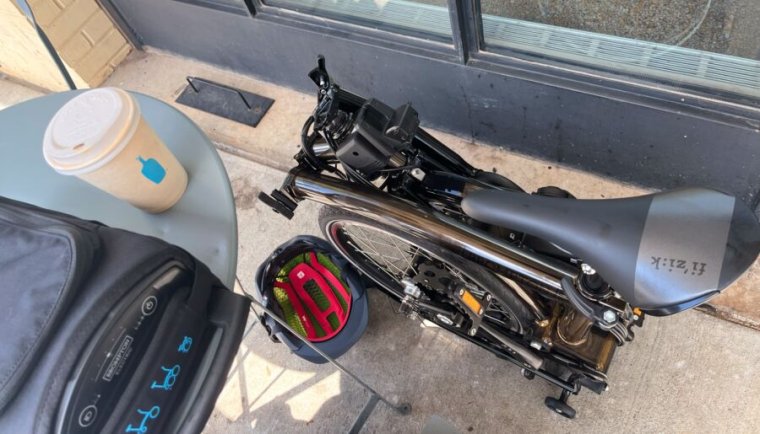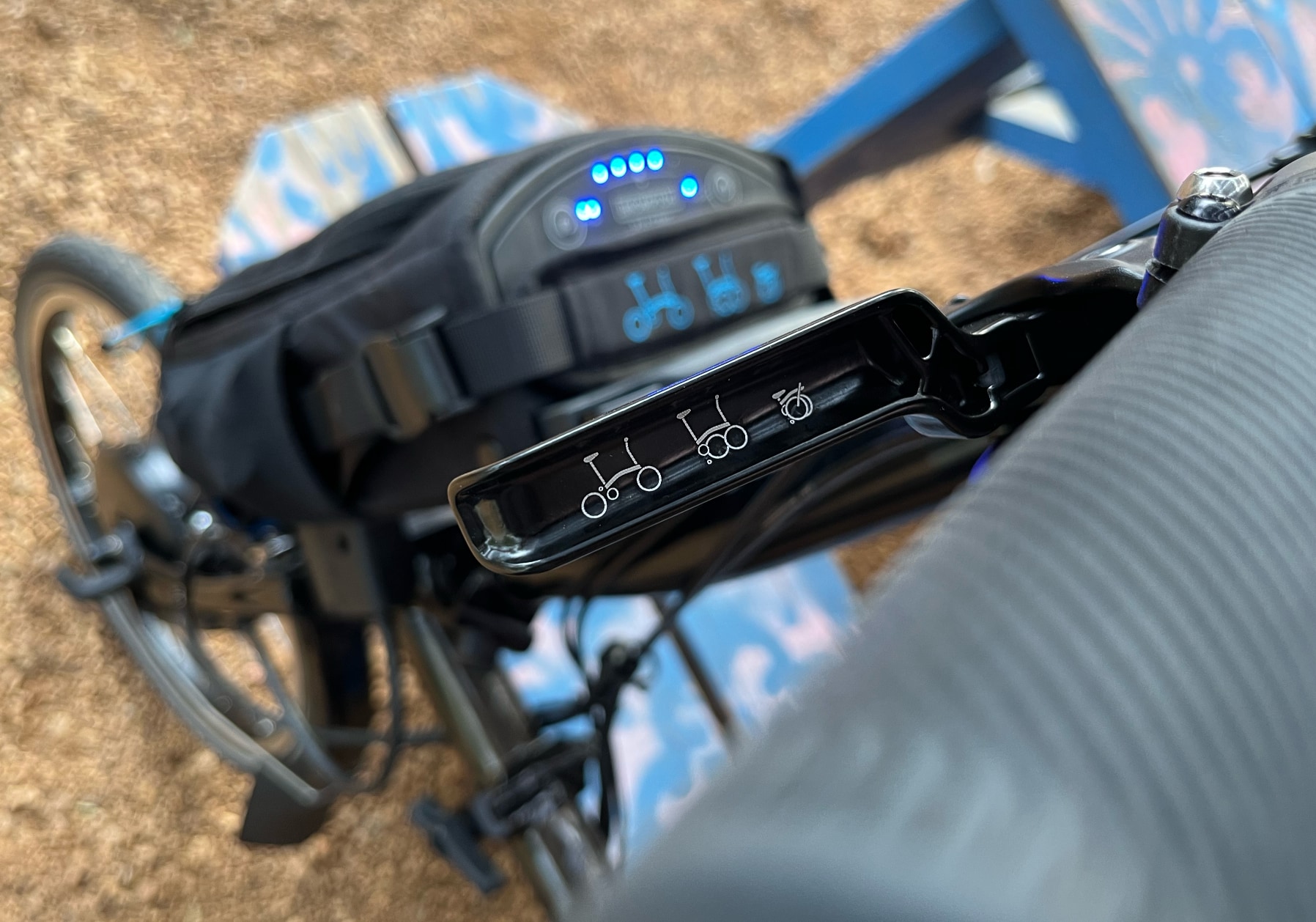
Kevin Purdy
There’s never been a better time to ride a weird bike.
That’s especially true if you live in a city where you can regularly see kids being dropped off at schools from cargo bikes with buckets, child seats, and full rain covers. Further out from the urban core, fat-tire e-bikes share space on trails with three-wheelers, retro-style cruisers, and slick roadies. And folding bikes, once an obscurity, are showing up in more places, especially as they’ve gone electric.
So when I got to try out the Brompton Electric C Line (in a six-speed model), I felt far less intimidated riding, folding, and stashing the little guy wherever I went than I might have been a few years back. A few folks recognized the distinctively small and British bike and offered a thumbs-up or light curiosity. If anyone was concerned about the oddity of this quirky ride, it was me, mostly because I obsessed over whether I could and should lock it up outside or not.
But for the most part, the Brompton fits in, and it works as a bike. It sat next to me at bars and coffee shops and outdoor eateries, it rode the DC Metro, it went on a memorial group ride, and it went to the grocery store. I repeatedly hauled it to a third-floor walkup apartment and brought it on a week’s vacation, fitting it on the floor behind the car driver’s seat. And with an electric battery pack, it was even easier to forget that it was any different from a stereotypical bike—so long as you didn’t look down.
Still, should you pay a good deal more than $3,000 (and probably more like $4,000 after accessories) for a bike with 16-inch tires—especially one you might never want to leave locked up outside?
Let’s get into that.
-
The Brompton C Line, pre-fold (mid-beer).
Kevin Purdy -
Step 1: Release a clasp and pull the bike frame up, allowing the rear wheel to swing forward underneath.
Kevin Purdy -
Step 2: Loosen the clamp and fold the front half back to align with the rear wheel, lining up a little hook on the wheel with the frame.
Kevin Purdy -
Step 3: Remove the battery (technically unnecessary, but wise), loosen a clamp holding up the handlebar, then fold it down onto the frame, letting a nub tuck into a locking notch.
Kevin Purdy -
Step 4: Drop down the seat (which also locks the frame into position), rotate one pedal onto the tire, and flip the other pedal up.
Kevin Purdy
Learning The Fold
Whether you buy it at a store or have it shipped to you, a Brompton C Line is possibly the easiest e-bike to unpack, set up, and get rolling. You take out the folded-up bike, screw in the crucial hinge clamps that hold it together, put on the saddle, and learn how to unfold it for the first time. Throw some air in the tires, and you could be on your way about 20 minutes after getting the bike.
But you shouldn’t head out without getting some reps in on The Fold. The Fold is the reason the Brompton exists. It hasn’t actually changed that much since Andrew Ritchie designed it in 1975. Release a rear frame clip and yank the frame up, and the rear wheel and its frame triangle roll underneath the top tube. Unscrew a hinged clamp, then “stir” the front wheel backward, allowing a subtle hook to catch on the rear frame. Drop the seat and you’ll feel something lock inside the frame. You can then unhinge and fold the handlebar down, or you can keep it up to push the bike around on its tiny frame wheels in “shopping cart mode.”

If you forget the sequence of the fold, there are little reminders in a few spots on the bike.
Kevin Purdy
After maybe five attempts, I began to get The Fold done in less than a minute. After around a dozen tries, I started to appreciate its design and motions. The way a Brompton folds up is great for certain applications, like fitting into a car instead of using a rack, bringing on public transit or train rides, tucking underneath a counter or table, or fitting into the corner of the most space-challenged home. It can also be handy if you’re heading somewhere you’re wary of locking it up outside (more on that in a moment).
